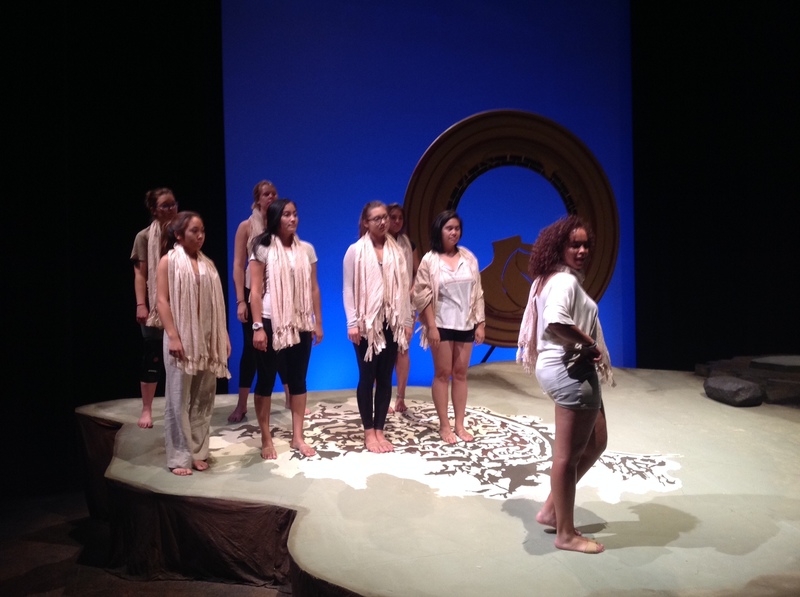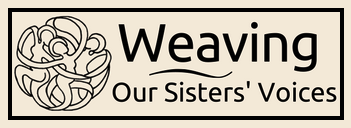Women's and Gender Studies Voices
Dr. Ann Ciasullo teaches in Gonzaga’s English and Women’s and Gender Studies Departments, and enthusiastically accepted my invitation to be a part of the 2015 production. She visited rehearsals, read the script, and was an energetic supporter of the ideas presented in the work. She had this to say as a post-show discussion panel member:
"As any good reader knows, stories have the power to transform; they take us to times, lands, and experiences that we may never have, and as such they expand our world. But if certain stories are told over and over again, and others are not, then that world becomes limited. Indeed, if all we see and hear are narratives that feature a male protagonist who struggles against societal norms (here think of Huck Finn, Jay Gatsby, or Holden Caufield, or even Frederick Douglass) or who saves his community or world or universe from destruction (think of Harry Potter, or Luke Skywalker), then we soon believe that the only people whose stories matter are men."
Writer Maya Angelou once stated that “there is no agony like bearing an untold story inside of you.” Weaving Our Sisters’ Voices tells those untold stories, and in doing so, it invites us to sit down, listen, and learn.
These sentiments resonated with the student performers as well. During our first rehearsal when the performers shared what about this production appealed to them and why they had auditioned, the majority of them shared their interest in the feminist themes in the show. And after rehearsals and performances, they expressed a deepening in these interests and in their own empowerment in each production:
"Weaving Our Sister's Voices was a very strong journey for me, especially since it was my first ever experience here at Gonzaga with the Theatre and Dance Department. I feel like I have gotten a little more spiritual, but the main impact was the impact of feminism and more information about strong women. Learning about these stories has really inspired me to become a stronger leader and to not be afraid of anything.”
– Megan Garcia, cast 2015
Not only did these different disciplines come together through departmental collaboration, but each member of the diverse cast came to the stories from their own world views. One performer from 2015 talked about how the embodying of the character of Vashti impacted her.

Regina Carrere as Vashti stands in front of the rest of the ensemble during a rehearsal, 2015. Photo courtesy of Suzanne Ostersmith.
"I auditioned on a whim, I am normally a back stage kind of gal. I am dorky. I always thought of myself as a goofy, funny character and I was most comfortable with improvisation. Playing the role of Vashti, I discovered sides of myself I didn’t know were there. I began to own the fact that I am capable of being sensual and strong and that there are many sides of me I can embrace."
– Regina Carrere, cast 2015
When Whitworth University invited us to perform again in the Spring of 2016, they used this performance not only as a teaching tool for theology as mentioned in Religious Studies Voices, but also as a collaborative event with their Women and Gender Studies program. Some additional comments from the students at the Whitworth University presentation were:
- Job’s wife refused to allow herself ruminate her losses and was instead empowered by the struggles of her life.
- The show encouraged me to apply my understanding of feminism to my understanding of the biblical stories.
- I think that Queen Vashti is someone who could be a symbol of hope for today’s churches and society. There are many women who need to know that their self-respect comes not from those around them, especially males, but from themselves.
- The benefits I’ve received from watching this play include a sort of artistic fulfillment as well as a new appreciation for how far women’s rights have come.
At one post show discussion, the question was posed “Who was the enemy in the production?” In all theatre and art looking at the conflict is important. As I talked about in Constructing a Script, conflict was part of the structure of the production. The woman who asked this question said that she answered it for herself after the performance, thinking that the production illustrated that the men were the enemies! Eek, No! As she was speaking, that old fear of being unable to articulate our take on this misconception built in the heat in my face. Couldn’t she see that while there were certainly stories in which the men oppressed the women, our focus was resisting the enemy of silence, of self-doubt, of unjust judicial systems etc! Interestingly, I didn’t even need to speak as many people had something to say in response. Many hands shot up including a number of men. I was disheartened when the first male student I called on responded generally supporting the woman’s view. At that moment, I thought perhaps my belief that that was NOT the meaning behind these stories was missed by all. But then the next person called on (also a man) supported what was more our view. Now the audience was sitting forward on their chairs wanting to engage further. Caley Edwards, the ASL choreographer, made eye contact with me as she was sitting beside me on the panel for that post show discussion. I could tell by her expression that she really wanted to have an opportunity to speak.
She spoke of how during our early meetings I shared that this production was in no way meant to ‘bash’ men, but rather to just encourage women in whatever situation they are in and to share their stories. This production emphasizes that we go through things to learn from them and then to help others going through the same situation. Caley said that she feels “that we judge peoples stories because we do not want to hear certain things that are involved in the story.” There is a temptation that if a story shows a bad side of someone or situation that we should not talk about. She went on to say “I have my own story, like everyone, but for a long time I felt that I could not share it or if I did share it I had to change some of it. I did this because I felt judged on things that are part of my story that I did not choose to have happen. But it is still part of my story.” It was clear that Caley had felt silenced in her life and that participating in this production made her strong enough to speak out.
“I do not think she was wrong or that she shouldn’t have spoken up because I believe everyone is entitled to their own opinion and view. I had to speak up because I felt that these woman’s stories (those that were in WSV) were being judged based on the idea that the stories may portray men in bad light instead of going past that and seeing the point in sharing all of these stories. The point is not to bash men and paint them as bad guys, it is to encourage women in tough situations to stand up for themselves and do something about it, to have a voice even when it has been quieted. I believe that too often stories are judged because it portrays someone in a bad light which is often true however; we often miss the point of the story because we have already judged it on whether someone is put in a bad light or not.”
Whether this audience member was convinced of our intentions became secondary to hearing a recent graduate speak in this way. She responded based on her personal experiences in life and in this show.
Caley went on to say later, “We need to encourage women and those whose voices have been hushed to speak out and be who they have always dreamed of being. But we cannot keep quieting people’s voices because someone may be judged or shown as the enemy in the story. We have to share stories to help others and to learn from them.
We all must use our voices and must continue to stand up for those whose voices may be limited (be it through oppression, confidence, or communication barriers). Because all people, but in the case of this production, women in particular, need to be encouraged. People’s stories need be shared to help others through tough times.
